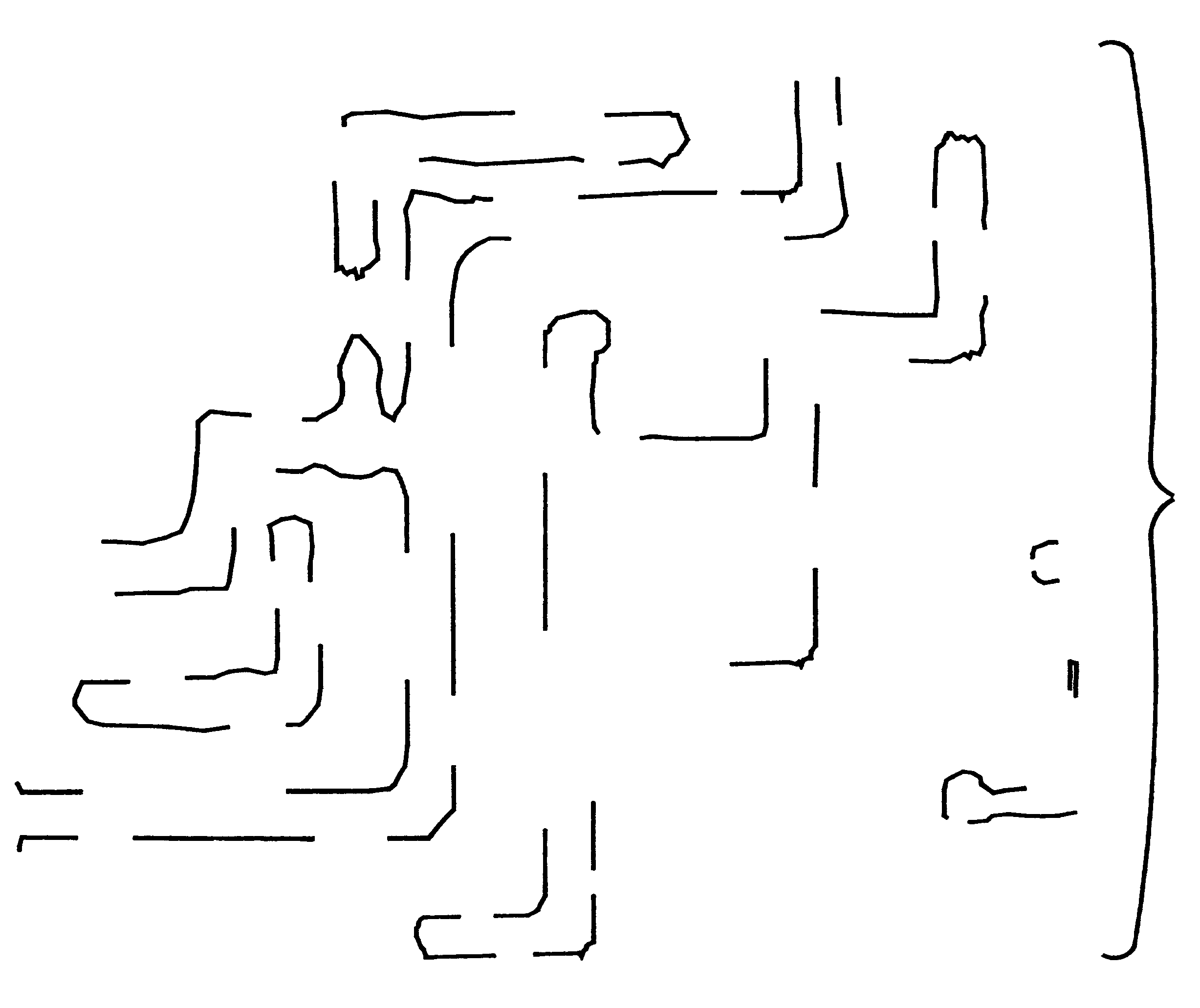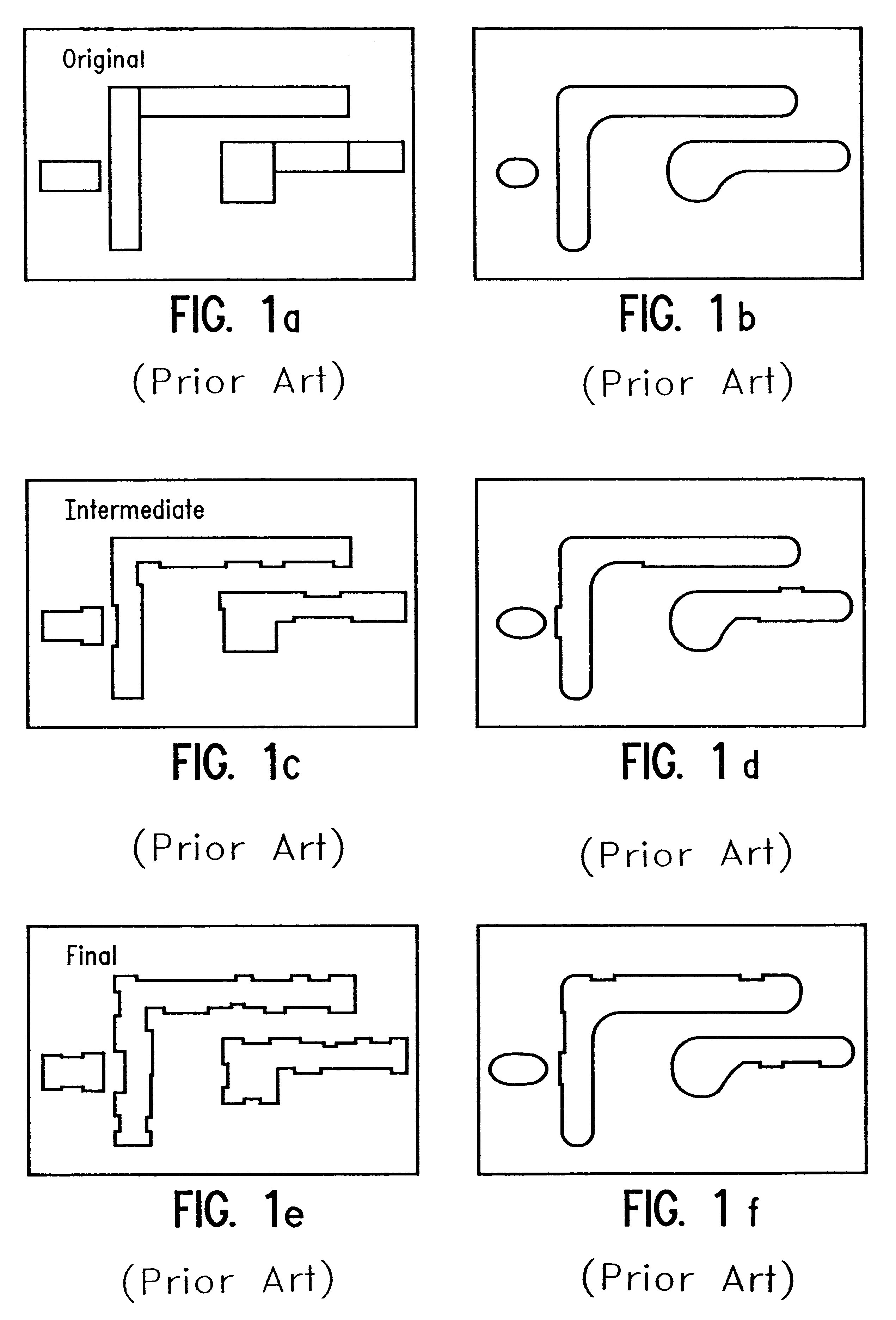Process window based optical proximity correction of lithographic images
a technology of optical proximity and lithographic images, applied in the field of semiconductor fabrication, can solve the problems of calculating exact correction values, limiting the usefulness of non-iterative rules-based opc, and the circuit image on the photomask may not be precisely reproduced on the substrate, etc., to achieve the maximum usable range of exposure dose and focus conditions
- Summary
- Abstract
- Description
- Claims
- Application Information
AI Technical Summary
Benefits of technology
Problems solved by technology
Method used
Image
Examples
Embodiment Construction
)
In describing the preferred embodiment of the present invention, reference will be made herein to FIGS. 1-7 of the drawings in which like numerals refer to like features of the invention. Features of the invention are not necessarily shown to scale in the drawings.
The applicants have determined at least two essential problems with commonly implemented model-based OPC tools. The first problem is that the contours of the simulated pattern on which the iterative correction is based are calculated at a single exposure condition, i.e. the modeled image used for OPC represents a snapshot of one possible image which may be obtained for a given process within acceptable values of process fluctuation. In accounting for the fact that the patterning process has certain fluctuations associated with it, there may be built a model based on the average of models calculated for various dose and focus conditions. However, regardless of what technique is used, in the end, the process is described as...
PUM
| Property | Measurement | Unit |
|---|---|---|
| total area | aaaaa | aaaaa |
| photosensitive | aaaaa | aaaaa |
| energy | aaaaa | aaaaa |
Abstract
Description
Claims
Application Information
 Login to View More
Login to View More - R&D
- Intellectual Property
- Life Sciences
- Materials
- Tech Scout
- Unparalleled Data Quality
- Higher Quality Content
- 60% Fewer Hallucinations
Browse by: Latest US Patents, China's latest patents, Technical Efficacy Thesaurus, Application Domain, Technology Topic, Popular Technical Reports.
© 2025 PatSnap. All rights reserved.Legal|Privacy policy|Modern Slavery Act Transparency Statement|Sitemap|About US| Contact US: help@patsnap.com



